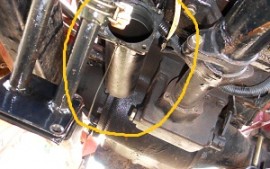
You always need to make sure that you’re taking proper care of your vacuum truck, the same way you would with any other vehicle. Most consumer cars that you purchase come with a handy checklist of items that you should be taking care of on a regular basis to prolong the life of your vehicle. You’ll always want to make sure that you’re getting an oil change roughly every 3,000 miles, for example.
Additionally, there are set time periods during which you should change your vehicle’s fluids, rotate your tires and more. The same type of maintenance is required to keep your vacuum truck running properly for as long as possible, but they must be done on a much larger scale. Most vacuum trucks are durable machines designed for heavy work. So long as you take care of yours properly and perform all of the maintenance that you’re supposed to, you’ll be able to keep your finely tuned machine running perfectly for the foreseeable future.
Daily Maintenance:
- Shut Down (Properly) at the End of the Day
- Open up all Drain Valves
- Check to Make Sure Systems are Completely Free of Water
Shut Down (Properly) at the End of the Day
One of the most important steps you can take to keep your vacuum truck running smoothly is to shut it down at the end of the day. Doing this isn’t as simple as turning off a regular car.
Open up all Drain Valves

You need to make sure you’re opening up all drain valves and emptying out the water system at the end of the day. Doing so will allow for debris to break free of the internal system and will also allow for air circulation.
Check to Make Sure Systems are Completely Free of Water
If you’re storing your truck during the cold winter months of the year, you’ll also need to make sure that you’re properly lubricating the truck, checking all fluids and making sure that the internal systems are completely free of water. This will prevent freezing that can damage one or more parts of the vehicle in short amounts of time.
Monthly Maintenance:
- Check Fluid Levels
- Check Air Breather
- Clean the Debris Body
- Perform Inspection on Air and Water Separator Cyclone Unit
- Check the Electrical Wiring System
Check Fluid Levels and Air Breather
One of the most important maintenance steps that you can take with your vacuum truck involves checking both your fluid levels and your air breather on a regular basis. You should perform these tasks at least twice a month, if not more. Make sure that all cylinders on the truck are in the proper position. If any of the fluid levels are reading as low, be sure to refill them as quickly as possible. If they are consistently low, your vacuum truck may have a leak in one or more areas.
Clean the Debris Body and Perform Inspection on Air and Water Separator Cyclone Unit
Other steps that you’ll need to take involve cleaning the debris body and performing an inspection of the air and water separator cyclone unit. Cleaning the debris body can be done with water, similar to the way you might was your car. Inspecting the air and water separator cyclone will involve properly cleaning the screens, checking the air access areas and wiping away dirt from the boom enclosures.
Check the Electrical Wiring System
You’ll also want to take care to check the electrical wiring system in your vacuum truck for any loose connections, frayed wires and other signs of damage. Preventative maintenance goes a long way with these types of heavy machines.
Yearly Maintenance:
- Change the Hydraulic Filters
- Flush the Hydraulic System
- Change Fluids
- Clean Out Body and Repaint with Primer (if storing on a seasonal basis)
Change the Hydraulic Filters

Something you’ll want to do with your vacuum truck at least once a year involves changing the hydraulic filters. You’ll need to remove the filter elements, replace them with new ones and refill the new filters with the proper type of hydraulic oil.
Flush the Hydraulic System
Changing your hydraulic filters will also be a good opportunity to flush the hydraulic system. Doing so involves properly draining all fluid from both the hydraulic tank and the fluid reservoir. You can do this by removing the drain plug. Once everything has been drained, replace the drain plug and fill the tank with fresh fluid.
Change Fluids
To make sure that your new fluid is properly integrated into the system, turn on the engine and perform all hydraulic functions. Doing so will help get the new fluid pumping through the system and will help make sure that everything is running as smoothly as it should be. Once you’ve performed all hydraulic functions, shut down your vacuum truck and check the fluid levels again. Depending on your specific model you may need to add fluid again. During this time it is also a good idea to replace the hydraulic tank breather.
Clean Out Body and Re-paint with Primer (if storing on a seasonal basis)
Depending on the area of the country where you live, you may store your vacuum truck for extended periods of time during certain seasons at least once a year. To do so, you should always steam clean the inside of the body and re-paint it with primer before storage. Doing so will help cut down on moisture, which will go a long way towards avoiding corrosion in areas like the air chamber. You may also need to rotate the blower by hand, depending on the specifics of your own situation.